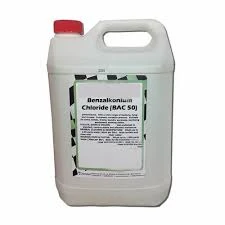Poly Aluminium Chloride for Effective Wastewater Treatment Solutions and Applications
The Role of Poly Aluminium Chloride in Wastewater Treatment
Wastewater treatment is an essential process for maintaining environmental health and ensuring public safety. Industrialization and urbanization have led to increased pollution levels, necessitating the development of efficient water treatment methods. Among the various chemical coagulants used in wastewater treatment, Poly Aluminium Chloride (PAC) has gained prominence due to its effectiveness, versatility, and environmental benefits.
What is Poly Aluminium Chloride?
Poly Aluminium Chloride is an inorganic polymer coagulant that is used widely in water treatment applications. It is composed of aluminium salts and is characterized by its high positive charge density, which helps in the aggregation of suspended particles in water. PAC is typically available in two primary forms liquid and powder, making it adaptable for different wastewater treatment processes.
How Does PAC Work?
The coagulation and flocculation process is crucial in removing impurities from wastewater. When added to water, PAC acts by neutralizing the negative charges of suspended particles, such as silt, clay, and organic matter. This neutralization allows these particles to clump together into larger aggregates, known as flocs. Once formed, these flocs can be easily removed through sedimentation or filtration.
One of the significant advantages of PAC over traditional coagulants, like alum, is its ability to work effectively over a wide range of pH levels. This flexibility makes it suitable for various types of wastewater, including those from municipal, industrial, and agricultural sources. Furthermore, PAC has a higher coagulant ability than alum, which means that lower dosages are often required to achieve similar treatment results, leading to reduced chemical costs.
Benefits of Using PAC in Wastewater Treatment
1. Improved Water Quality PAC significantly enhances the removal efficiency of suspended solids, turbidity, and dissolved organics from wastewater. This leads to improved clarity and overall water quality that meets regulatory standards for discharge.
poly aluminium chloride in wastewater treatment

2. Reduced Sludge Production The use of PAC results in the generation of less sludge compared to traditional coagulants. This is primarily because PAC requires lower dosages for effective coagulation. Reduced sludge production translates to lower disposal costs and less environmental impact.
3. Compatibility with Other Treatment Processes PAC can be effectively combined with other treatment methods, such as biological treatment or membrane filtration. Its compatibility enhances the overall performance of wastewater treatment systems.
4. Cost-Effectiveness Although the initial cost of PAC may be higher than some traditional coagulants, its higher efficiency and reduced sludge generation often lead to lower overall operational costs. The reduction in the dosages required and the associated savings in sludge handling make PAC a cost-effective choice for many facilities.
5. Minimal Environmental Impact PAC is considered to be less toxic than other aluminium-based coagulants. Its dosage can be precisely controlled, which helps in minimizing the release of residual aluminium in treated water. This contributes to environmentally friendly wastewater treatment practices.
Challenges and Considerations
While PAC has many advantages, there are also challenges and considerations to address. The optimal dosage of PAC varies depending on the characteristics of the wastewater being treated, so careful monitoring and adjustment are essential to achieve the best results. Additionally, while PAC is relatively safe, operators must still handle it with care, adhering to safety guidelines to prevent any potential health risks.
Conclusion
Poly Aluminium Chloride has emerged as a valuable tool in the arsenal of wastewater treatment technologies. Its effectiveness, versatility, and lower environmental impact make it an attractive option for treating various types of wastewater. As the demand for clean water continues to rise amid growing industrialization and urbanization, the use of PAC in wastewater treatment will likely expand, contributing to sustainable environmental management and public health. By investing in PAC and optimizing its application, municipalities and industries can work towards cleaner, safer water systems for future generations.
-
lk-319-special-scale-and-corrosion-inhibitor-for-steel-plants-advanced-solutions-for-industrial-water-systemsNewsAug.22,2025
-
flocculant-water-treatment-essential-chemical-solutions-for-purification-processesNewsAug.22,2025
-
isothiazolinones-versatile-microbial-control-agents-for-industrial-and-consumer-applicationsNewsAug.22,2025
-
scale-inhibitor-key-solutions-for-water-system-scale-preventionNewsAug.22,2025
-
organophosphonates-versatile-scale-inhibitors-for-industrial-water-systemsNewsAug.22,2025
-
scale-and-corrosion-inhibitor-essential-chemical-solutions-for-water-system-maintenanceNewsAug.22,2025





